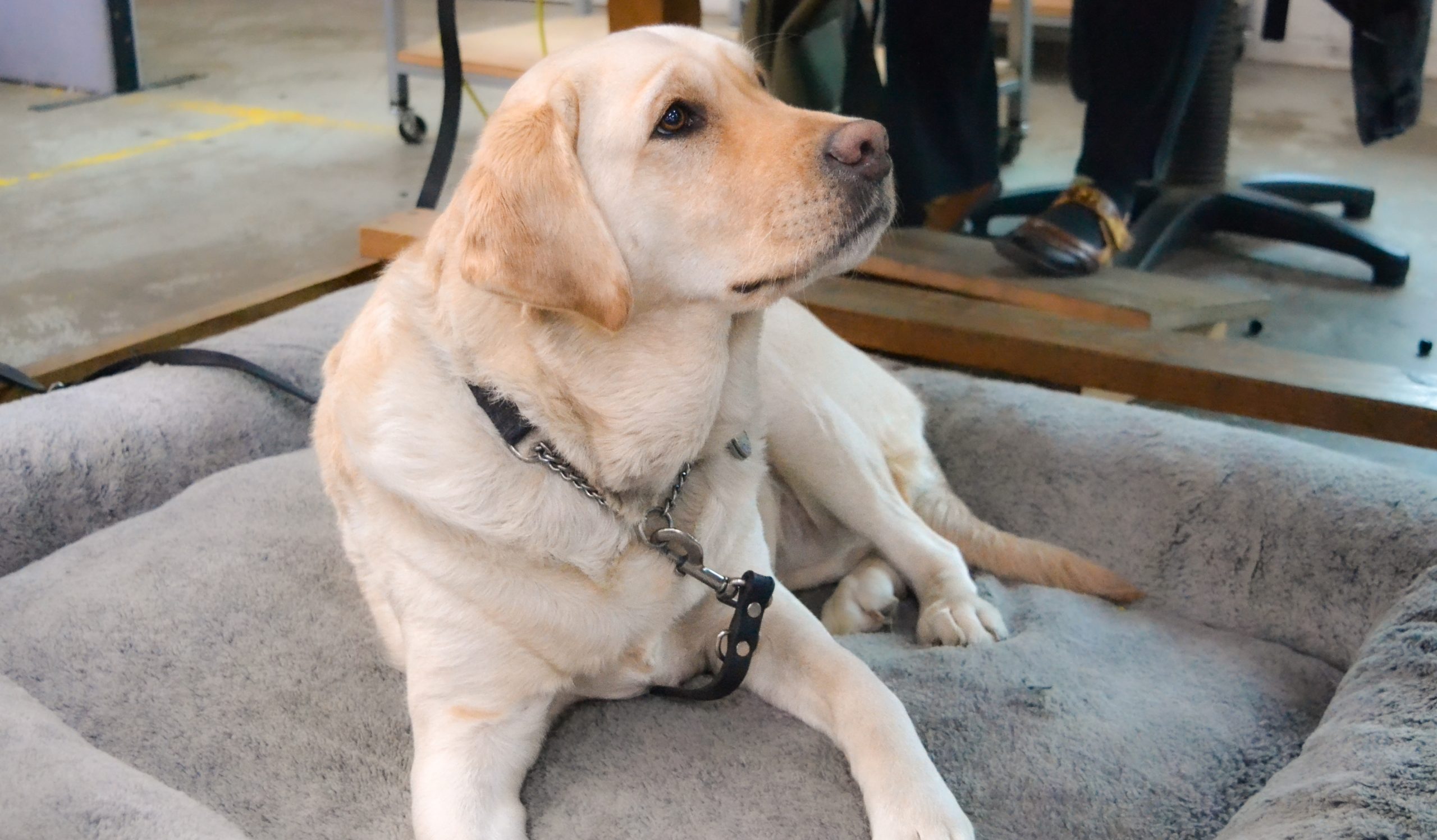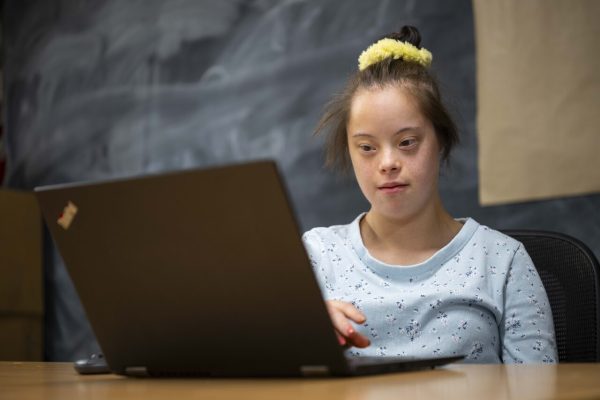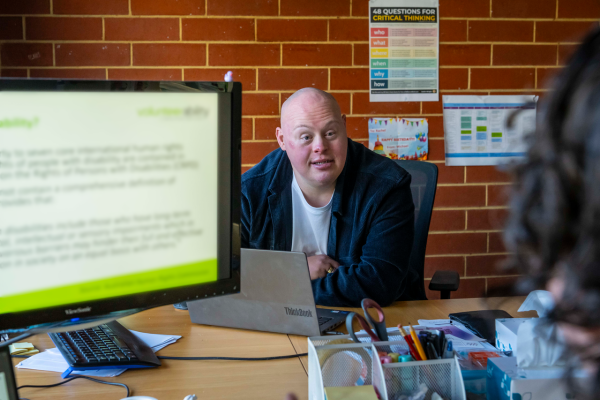Paws for thought
Did you know that Australia has one of the highest rates of dog ownership in the world?
According to research, having a Guide Dog has psychological, social, and physical benefits. Guide Dogs, also known as Service Dogs or Seeing Eye Dogs, are specially trained animals that assist people who are blind or are vision impaired.
These dogs support people in identifying potential hazards and navigating the community safely.
These furry friends are also great companions and help reduce the risk of feeling lonely and anxious. They encourage social interaction and boost the confidence of a person with a visual impairment by providing assurance that their companion can support and assist them in social settings and unfamiliar locations.
Orana Netley Business Services employees Cheryl and Michael, are supported by their guide dogs, Winston (Cheryl’s Labrador x Golden Retriever) and Whitney (Michael’s Labrador).
Winston and Whitney, each have their own bed under their work stations, providing support and companionship throughout the day.
“Having Winston by my side provides an immense amount of mobility support and freedom,” said Cheryl. “Off-duty, Winston, is the perfect companion too.”

Michael and Cheryl both work on assembling various items, most recently parts for water sprinkler systems.
Cheryl began working for Orana in 2013, navigating to Netley each morning via public transport and then to her work station with the assistance of her Guide Dog.
Michael, who began working for Orana earlier this year, is also supported by Whitney each day to arrive safely to work.
“When we get our dogs, we go through training together.” said Michael.
When a Guide Dog transitions from training to working, they are matched with their handler, and then undergo training to develop a bond and understand the needs of their handler.
Guide Dogs can provide assistance for 10 years before retiring and becoming household pets.
“The Royal Society for the Blind do such a fantastic job in training dogs and providing services for people with low or no vision” said Cheryl.



